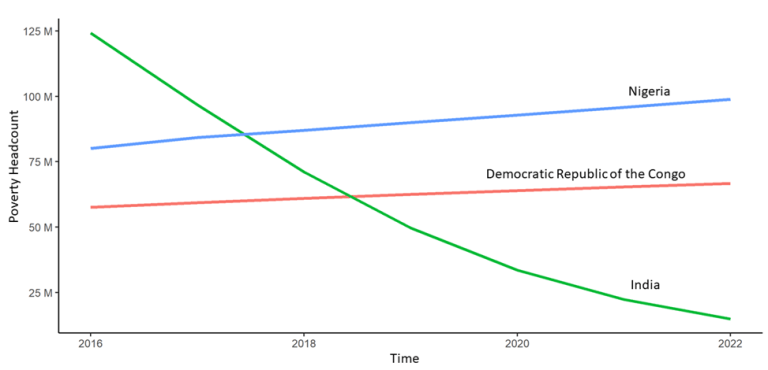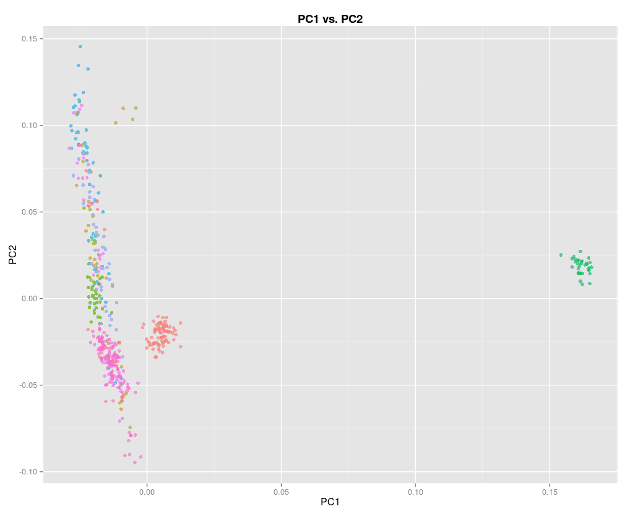It has long been asserted that South Asia may make average strides economically, but it is still in absolute terms the locus of most of the world’s grinding poverty. This may not be true much longer. In particular, some estimates now suggest that India is no longer the world’s “leader” in extreme poverty in absolute terms. From Brookings, The start of a new poverty narrative:
According to our projections, Nigeria has already overtaken India as the country with the largest number of extreme poor in early 2018, and the Democratic Republic of the Congo could soon take over the number 2 spot (Figure 1 below). At the end of May 2018, our trajectories suggest that Nigeria had about 87 million people in extreme poverty, compared with India’s 73 million. What is more, extreme poverty in Nigeria is growing by six people every minute, while poverty in India continues to fall. In fact, by the end of 2018 in Africa as a whole, there will probably be about 3.2 million more people living in extreme poverty than there are today.
Bangladesh has been making progress as well, from the World Bank:
Bangladesh has made remarkable progress in reducing poverty, supported by sustained economic growth. Based on the international poverty line of $1.90 per person per day, it reduced poverty from 44.2 percent in 1991 to 13.8 percent in 2016/17. In parallel, life expectancy, literacy rates and per capita food production have increased significantly. Progress was underpinned by 6 percent plus growth over the decade and reaching to 7.3 percent in 2016/2017, according to official estimates. Rapid growth enabled Bangladesh to reach the lower middle-income country status in 2015. In 2018, Bangladesh fulfilled all three eligibility criteria for graduation from the UN’s Least Developed Countries (LDC) list for the first time and is on track for graduation in 2024.
Here’s GDP for South Asian countries in 2005 dollars:
I left Bangladesh in 1980. Not too long after I was born. I went back to visit in 1989 and 2004. In relation to 1980, per capita GDP was 1.15x. in 2004 it was 1.6x. In 2016 it was 2.9x. So over the past 14 years there’s been a 2x increase in GDP per capita in Bangladesh! The equivalent figure in the United States is 1.1x.

